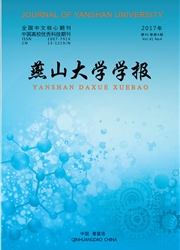

 中文摘要:
中文摘要:
以自行设计的冷轧工作辊用锻造高速钢为研究对象,采用膨胀仪测定了其静态CCT曲线,采用Gleeble-3500热模拟试验机测定了其高温形变后的CCT曲线(动态CCT曲线)。在金相显微镜下对不同冷速冷却后的显微组织进行了观察并测定了其维氏硬度,分析了热变形对连续冷却转变曲线的影响。结果表明:冷轧工作辊用锻造高速钢在快冷速下得到隐晶马氏体+残奥+碳化物,慢冷速下得到的是珠光体+碳化物。冷速大于0.1℃/s时,均能得到马氏体组织,说明该钢具有良好的淬透性。热变形对珠光体临界转变速度影响不大,但却能减小珠光体转变的温度区间和马氏体转变开始点的温度范围。
 英文摘要:
英文摘要:
The forged high speed steel (HSS) for cold working roller is focused in this work. The static continuous cooling trans- formation (CCT) curve of the HSS is determined in a Formastor-F full automatic phase transition dilatometer. The dynamic CCT curve of hot-formed steel is detected by Gleeble-3500 thermal simulator. The microstructures are observed by Metallographic Micro- scope and Rockwell hardness is also measured. The influence of hot formation on the CCT curves is studied. The results show that cryptocrystalline martensite, residual austenite and carbides are obtained at high cooling rates, while pearlite and carbides are ob- tained at low cooling rates. When the cooling rate is over 0.1 ℃/s, almost total martensite is attained to show good hardenability. The hot deformation has little effect on the critical transformation rate ofpearlite, however it can effectively decrease the temperature range of pearlite transformation and starting point of martensite transformation.
 同期刊论文项目
同期刊论文项目
 同项目期刊论文
同项目期刊论文
 Study on stable and meta-stable carbides in a high speed steel for rollers during tempering processe
Study on stable and meta-stable carbides in a high speed steel for rollers during tempering processe Forging limit of a novel high-speed-steel cold work roll based on ductile fracture criteria by finit
Forging limit of a novel high-speed-steel cold work roll based on ductile fracture criteria by finit 期刊信息
期刊信息
